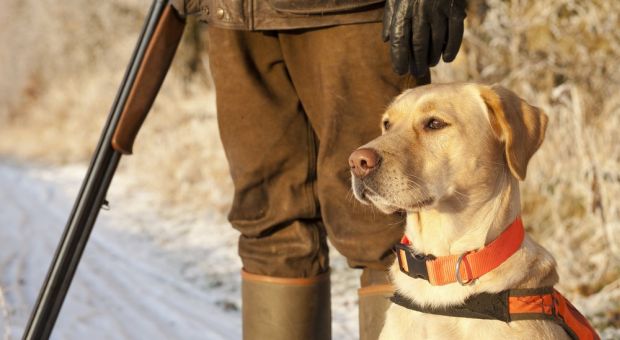Small game hunting provides a rewarding and engaging way to connect with the outdoors and fully immerse yourself in the natural world. It offers both the thrill of the chase and the satisfaction of a successful hunt.
To make the most of this experience and improve your chances of success, you should consider several important factors. Whether you’re targeting hares, squirrels, or other small prey, employing the right techniques and strategies can greatly enhance your effectiveness.
Understanding the habits and behaviors of your target animals is crucial; for instance, knowing their feeding patterns, preferred habitats, and movement routines can give you a significant advantage.
Additionally, mastering the use of different hunting tools and equipment tailored for small game—such as appropriate firearms, ammunition, or traps—can make a big difference.
Here are some other tips that will help you bag more critters:
Know the regulations for your area
If you want to engage in small game hunting, it’s crucial to be fully informed about the regulations and laws specific to your area. These rules are designed to ensure sustainable wildlife management, promote safety, and preserve the natural environment. Here are what you need to know:
Determine whether you need a specific hunting license or permit for small game hunting. Regulations often require hunters to have a valid license, and in some areas, you might need additional permits for certain species or hunting methods.
Hunting seasons vary by region and species. Be aware of the open seasons for small game hunting in your area to ensure you’re hunting legally. Outside of these times, hunting may be prohibited to protect wildlife during breeding or critical periods.
There are often limits on the number of animals you can harvest per day or per season. These limits are in place to maintain healthy populations and prevent overharvesting. Be sure to familiarize yourself with these limits to avoid exceeding them.
In some areas, hunters may be required to report their harvest or provide documentation of their activities. Be prepared to comply with any reporting requirements.
Different regions may have specific rules about the types of weapons or methods that can be used for hunting small game. This might include restrictions on the use of certain firearms, ammunition, traps, or other equipment.
Some species may be protected by law and cannot be hunted. Make sure you know which species are protected in your area to avoid any legal issues and contribute to conservation efforts.
Verify whether you have permission to hunt on private land or if you’re required to obtain access permits for public lands. Respect property boundaries and make sure you follow all additional rules set by landowners or managing authorities.
In some areas, hunters may be required to report their harvest or provide documentation of their activities. Be ready to comply with any reporting requirements.
Ensure the safety protocols are covered
Prioritizing safety protocols before you begin hunting is essential to ensure a safe and enjoyable experience. Follow these steps to make sure you make it home in one piece:
Equip yourself with appropriate safety gear, including blaze orange clothing or vests, which enhance visibility and help prevent accidents with other hunters. Additionally, wear safety glasses and ear protection if you are using firearms.
Familiarize yourself with your hunting gear, whether it’s a firearm, bow, or traps. Perform regular maintenance, and ensure that all equipment is in good working condition before heading out.
Always identify your target clearly before taking a shot to avoid accidental harm to people, pets, or other animals. Ensure you have a clear line of sight and understand what is beyond your target.
Follow the basic rules of firearm safety: keep your gun unloaded until ready to use, never point it at anything you do not intend to shoot, and always keep your finger off the trigger until you’re ready to fire.
Maintain situational awareness at all times. Be conscious of other hunters, wildlife, and environmental conditions. Keep a safe distance from others and be mindful of changes in weather that could impact your safety.
Inform someone of your hunting plans, including your intended location and estimated return time. This ensures that someone knows where you are in case of an emergency.
Bring a well-stocked first aid kit with you on every hunting trip. Be familiar with basic first aid procedures and know how to treat common injuries you might encounter in the field.
Never consume alcohol or drugs before or during your hunt. Impairment can significantly increase the risk of accidents and compromise your ability to make safe decisions.
Make sure to stay hydrated and maintain your energy levels with appropriate food and drink. Fatigue and dehydration can impair your judgment and physical abilities, affecting your overall safety.
Bring the right gear
Going hunting without the right gear is a challenging practice, and rather futile experience. You need proper equipment for a successful and enjoyable hunting experience.
Depending on the type of small game you’re hunting and local regulations, select an appropriate weapon. This might include rifles, shotguns, bows, or even traps. Make sure your choice aligns with the game species and your hunting skills.
Use ammunition that is appropriate for the weapon you’re using and the game you’re targeting. For example, different types of ammunition are designed for specific calibers or species, and using the wrong type can affect accuracy and effectiveness.
A good pair of binoculars or a scope can greatly enhance your ability to spot and accurately target game. Ensure your optics are suited to your hunting environment and are properly adjusted for clear, precise vision.
Wear clothing suited to the weather conditions and terrain you’ll encounter. This typically includes moisture-wicking base layers, insulated and waterproof outer layers, and durable, camouflaged pants and jackets. Layering, as in every outdoor activity, is key for adjusting to changing conditions.
Pack essential hunting gear such as a knife, multi-tool, and a rangefinder if needed. A knife is useful for field dressing game, while a multi-tool can come in handy for various tasks. A rangefinder helps in estimating distances accurately.
Include safety items in addition to the first aid kit, like a whistle, and a flashlight. In case of emergencies, a whistle can signal for help, while a flashlight is useful for navigating in low light.
Use a hunting pack or backpack to carry all your equipment efficiently. It should be comfortable, durable, and have enough compartments to organize your gear. Make sure it is designed for the type of hunt you’re undertaking, whether it’s a short-day trip or an extended outing.
Before heading out, check all your equipment to be sure it’s in working order. Check for any damage, wear, or malfunctioning parts and make necessary repairs or replacements.
Equip yourself with navigation tools such as a map, compass, or GPS device. Knowing how to use these tools will help you stay oriented and find your way back if needed.
Scout the area
Scouting the area before your hunt is essential for identifying the most promising locations and maximizing your chances of a successful hunt. Not only will it help you find good hunting grounds, but it will also make you aware of areas that need to be avoided, where water holes are located, and more.
Before heading out, gather information about the hunting area. Consult maps, local hunting reports, and wildlife management resources to understand the terrain, vegetation, and wildlife patterns. This background knowledge can help you pinpoint areas with high potential.
Make a pre-hunt visit to the location to observe the terrain, check access points, and identify potential hunting spots. Visiting the area helps you get a feel for the landscape and the best ways to approach it.
Look for key features that attract small game, such as water sources, feeding areas, and cover. Small game often congregates around these features, so focusing your scouting efforts on these locations can increase your chances of success.
During your scouting, pay attention to signs of wildlife activity. Tracks, droppings, and chewed vegetation can indicate where animals are active. Observing these signs helps you identify high-traffic areas and adjust your hunting strategy accordingly.
Assess the terrain for suitability and accessibility. Consider factors like elevation, vegetation density, and terrain obstacles. Choose locations that offer a balance of cover and visibility while providing manageable access routes for carrying your gear.
When scouting, take note of the prevailing wind direction. Wind direction is crucial for avoiding detection by game animals. Choose a location where you can position yourself downwind of where you expect the game to appear, minimizing the chance of your scent reaching them.
Ensure the location you select offers adequate shelter and safety. Identify spots where you can take cover from adverse weather conditions and ensure the area is free from hazards such as unstable terrain or dangerous wildlife.
If you plan to use a stand or blind, scout for potential sites that provide a good vantage point and are positioned where you anticipate game activity. Make sure these spots offer a clear shot and are securely positioned.
Consider potential disturbances that could impact your hunt, such as high-traffic areas, nearby roads, or other hunters. It’s advisable to go for locations that minimize the risk of unexpected interruptions and provide a quieter, more secluded environment.
Document your observations and findings during your scouting trip. Take notes and use maps or GPS to mark key locations, wildlife signs, and any other relevant information. This will be valuable for planning your hunt and navigating the area efficiently.
Identify natural food sources like berry bushes, nuts, or other plants that small game might feed on. These areas often attract animals and can be strategic locations for setting up your hunting gear.
To be continued
The second part of this article will be published shortly and will cover tips on the need to pay attention to your surroundings, how to take the perfect shot and will also provide a few hunting strategies for small game. Stay tuned!












































































That was useless! That article was about hunting period. Nothing about hunting when the local grocery store is empty; such as…
What about when the game population is decimated because of desperate overhunting?
What about getting attacked by other hunters who are as hungry as your family?
What if you do make a kill and someone reaches it before you do?
Hunting during an SHTF is going to be way more than calm walk in the woods!
Excellent article, waiting for part 2!
As times, conditions, etc. keep getting worse, it “IS” getting a bit scary…
Thank you for ALL you do to help others, particularly homegrown Americans.
Here is part II for you 🙂 https://www.survivopedia.com/tips-for-small-game-hunting-part-ii/